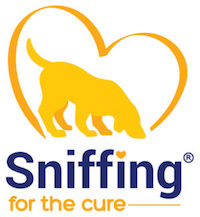Dog’s sense of smell is 1,000 times better than humans. If this is the case, could dogs distinguish between someone sick from someone who is not ill? Could they discriminate between coronavirus infected patients and non-infected people?
A group of doctors in Germany explored these questions. The doctors trained detection dogs for one week to detect saliva or secretions of patients who had COVID-19. The results? Impressive. The scent dogs were able to distinguish between samples of infected patients and non-infected patients with high levels of sensitivity (83%) and specificity (96%).
These results are certainly promising but should be considered as preliminary. What this means is that more research is needed before dogs are used for the detection of COVID-19.
Why? When using detection dogs to diagnose a viral disease that affects the respiratory system, we encounter some challenges:
Challenge 1:
Dogs can get infected by coronavirus. Also, humans can transmit the virus to their pets with subsequent infection of dogs. The doctors in the study treated the samples from COVID-19 patients with a compound to make the virus unable to infect. By doing this, they ensured that the virus could not infect the dogs or handlers.
Challenge 2:
Temporary loss of smell is one of the earliest and most commonly reported indicators of COVID-19. If this is the case for humans, infection in a dog could alter its sense of smell.
What needs to happen before we use detection dogs in public areas to detect COVID-19?
Before using scent dogs for the detection of COVID-19 patients in public areas such as airports, or sports events as an alternative to lab testing, we need to ensure the safety of the detection dogs and their handlers. To address this concern, Dr. Volk’s group is developing strategies to securely present COVID-19 samples to detection dogs and prevent transmission of the virus.
The potential use of dogs for mass detection of infected people could be of great benefit. But before then, additional work is required to understand better the role of using detection dogs for the recognition of a viral respiratory disease, such as COVID-19.





No Comments